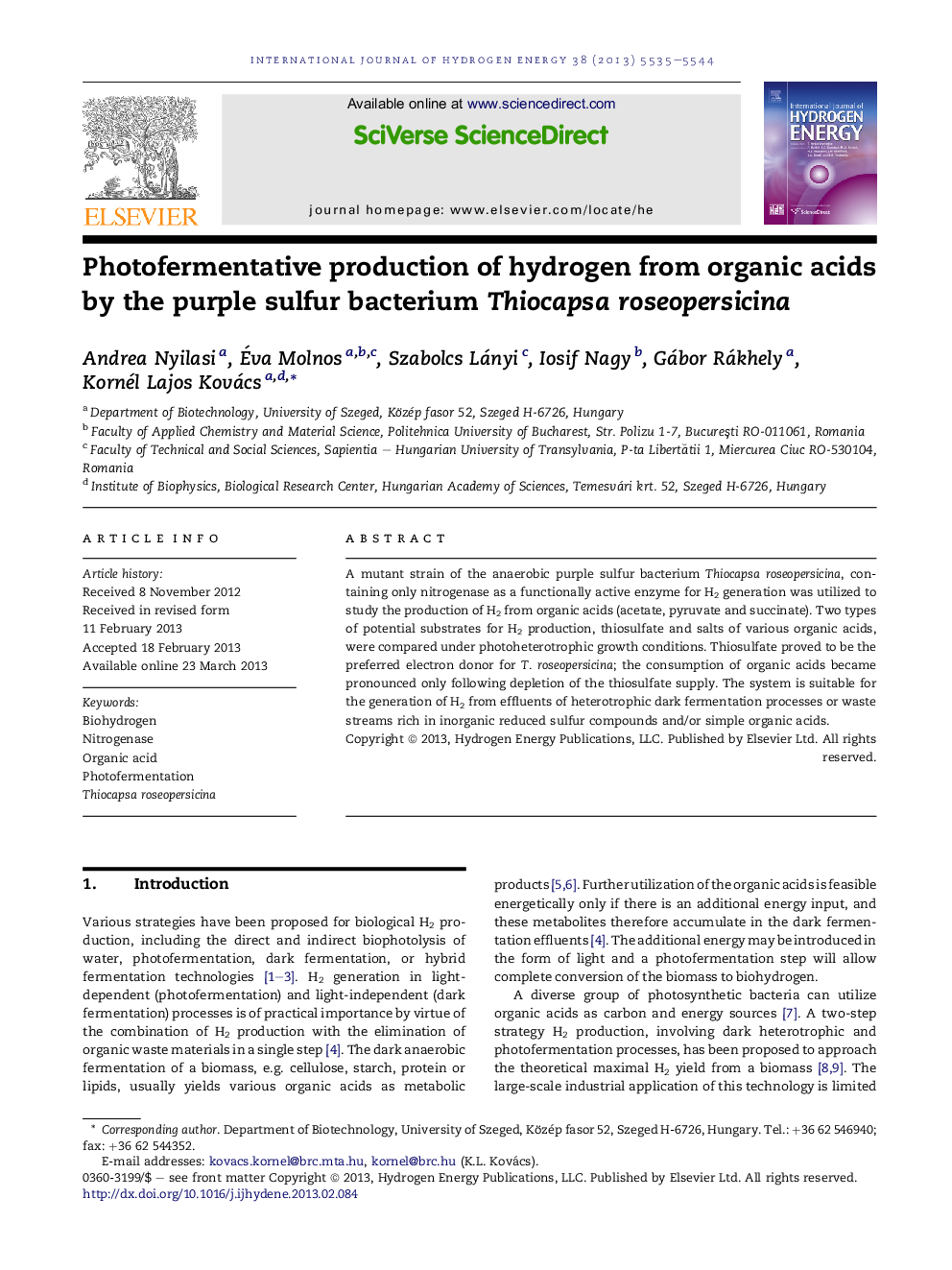| Article ID | Journal | Published Year | Pages | File Type |
|---|---|---|---|---|
| 1281662 | International Journal of Hydrogen Energy | 2013 | 10 Pages |
A mutant strain of the anaerobic purple sulfur bacterium Thiocapsa roseopersicina, containing only nitrogenase as a functionally active enzyme for H2 generation was utilized to study the production of H2 from organic acids (acetate, pyruvate and succinate). Two types of potential substrates for H2 production, thiosulfate and salts of various organic acids, were compared under photoheterotrophic growth conditions. Thiosulfate proved to be the preferred electron donor for T. roseopersicina; the consumption of organic acids became pronounced only following depletion of the thiosulfate supply. The system is suitable for the generation of H2 from effluents of heterotrophic dark fermentation processes or waste streams rich in inorganic reduced sulfur compounds and/or simple organic acids.
► The nitrogenase of Thiocapsa roseopersicina produced significant amounts of hydrogen. ► Biohydrogen is produced from reduced sulfur compounds, i.e., thiosulfate. ► T. roseopersicina can also generate hydrogen from simple organic acids. ► The organic acids were utilized following the depletion of the thiosulfate. ► The organic acids were consumed in distinct metabolic pathways.
